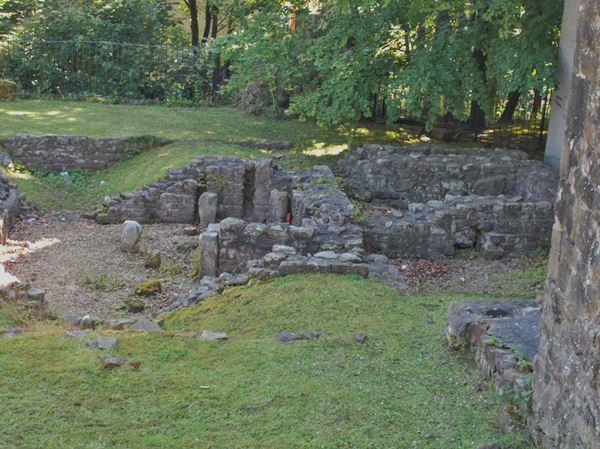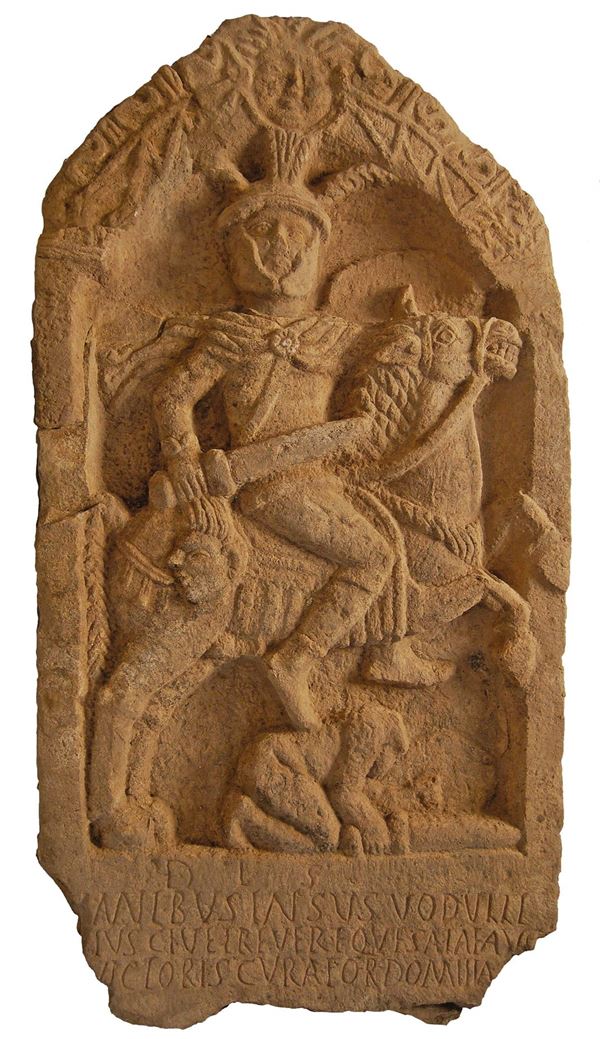Roman Bath House

Discovered and excavated in 1973/4, the Roman bath house in Vicarage Field, Lancaster, formed one end of a large courtyard house, probably the home of a Roman official. Much of the actual bath part of the building is unfortunately hidden beneath a multi-storey car park, but you can see the base of the walls and the remains of the hypocaust system used to heat the baths.
The bath house was demolished in about 340 AD to make way for a new and massive stone fort. Part of the fort wall, known as the ‘Wery Wall’, can also be seen nearby.
The visible remains are just a small part of the Roman archaeology in this area. You can read more about Roman Lancaster at the end of this page.
- Admission is free and the site is open at all reasonable times.
- There is an information board beside the bath house but there are no staff on site. Please contact lancastercitymuseum@lancaster.gov.uk with any questions.
- The excavation is in a field, so access is via a short walk along footpaths and over grass.
Find the bath house on Google Maps here.
By Car
The bath house is in Vicarage Field, with access from the footpath linking St George’s Quay to Castle Hill. If you are driving, please DO NOT try to follow satnav directions directly to the site. There is a limited amount of on-street parking close to each end of the access path, on St George's Quay or Castle Hill, but to make your visit as easy as possible we recommend you either choose one of the nearby car parks as your destination or use Lancaster’s Park and Ride scheme to get into the city centre from the M6.
On Foot, by Public Transport or by Bike
The bath house is withing easy walking or cycling distance of Lancaster’s bus and railway stations. It’s accessed via a mown grass path through Vicarage Field from the footpath which connects St George’s Quay to Castle Hill.
- Download a free visitor map of Lancaster city centre (PDF, 929KB).
- Download a free Cycling Map of Lancaster & Morecambe Bay (PDF, 6MB).

Roman Lancaster continues to be a fascinating place that has intrigued scholars and members of the public for many years. You can find out more at Lancaster City Museum, which has many Roman artefacts on display. Lancaster Maritime Museum also has a small section about Roman Lancaster, with objects including an altar stone dedicated to Mars, the Roman god of War.
For more information on recent excavations of Roman archaeology on Lancaster’s Castle Hill please see the Beyond the Castle facebook page.
Although it is likely that people were already living on or near the site, the Roman fort is where the present city of Lancaster really began and over the years many excavations have taken place. Indeed, the area continued to be significant with first an early medieval minster and then the medieval castle and priory as well as more recent allotments.
These two reports illustrate very well the process of archaeological investigation and discovery that has taken place over the last 100 years:
- The Archaeology of Lancaster's Castle Hill (7.9MB)
- Quay Meadow Archeological Evaluation Report (7.7MB)
The report by Jason Wood of Heritage Consultancy Services draws together the archaeological work that has taken place, providing a comprehensive overview of work to date with a focus on the Roman heritage of the site. This analysis ends with the exciting news that geophysics has brought to light what is very likely to be a Romano-Celtic temple. If true, this will be only the second to be discovered in the North of England – the other being at Vindolanda on Hadrian’s Wall.
The report by the Lancaster and District Heritage Group details the excavation that was undertaken in 2015 on part of what is now proposed to be a Romano-Celtic temple, before the geophysics revealed the rest of the building. It demonstrates the process of discovery and understanding that takes place as further pieces are added to the puzzle and the importance of recording as much detail as possible and of undertaking post-excavation analysis. In the light of the geophysics it can now be returned to with fresh eyes.
Lancaster City Council commissioned the report from Heritage Consultancy Services to gain a full understanding of the work that had already taken place on site. The council has set up an expert advisory group that is helping to develop a research framework for the fort site and related adjacent areas so that priorities for future investigation can be decided based on what we know so far and following consultation with archaeological professionals, academics, heritage groups and members of the public.



